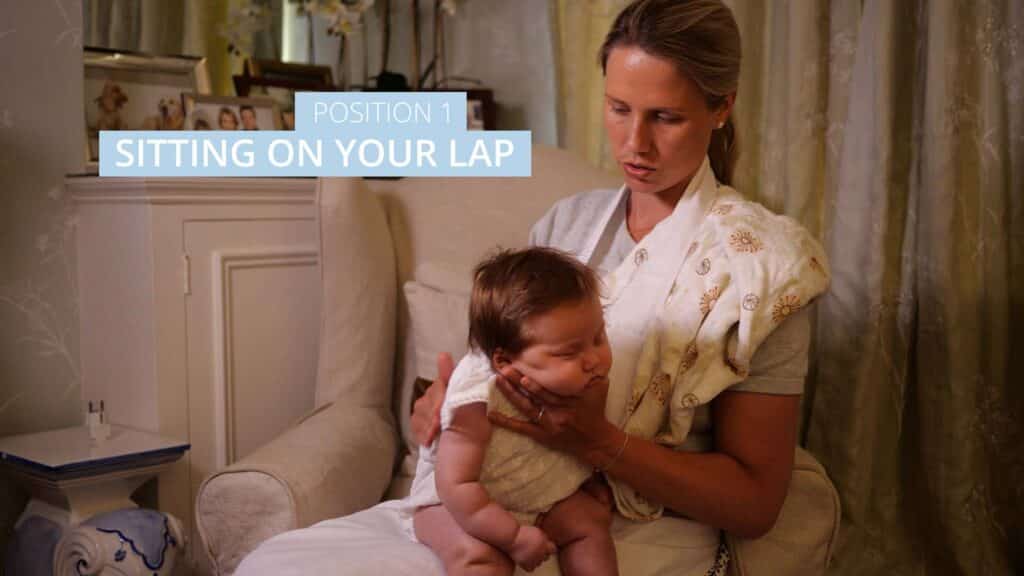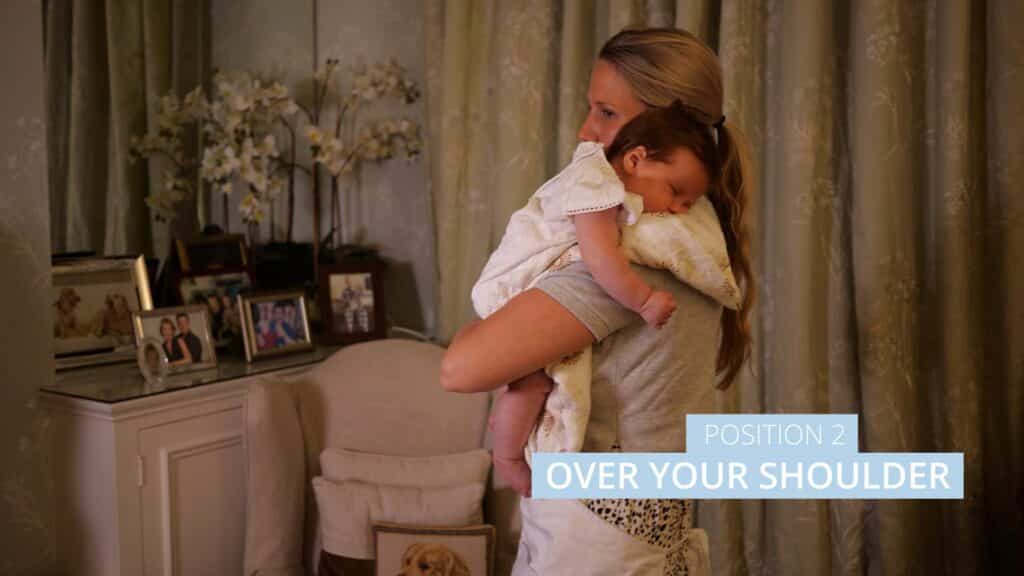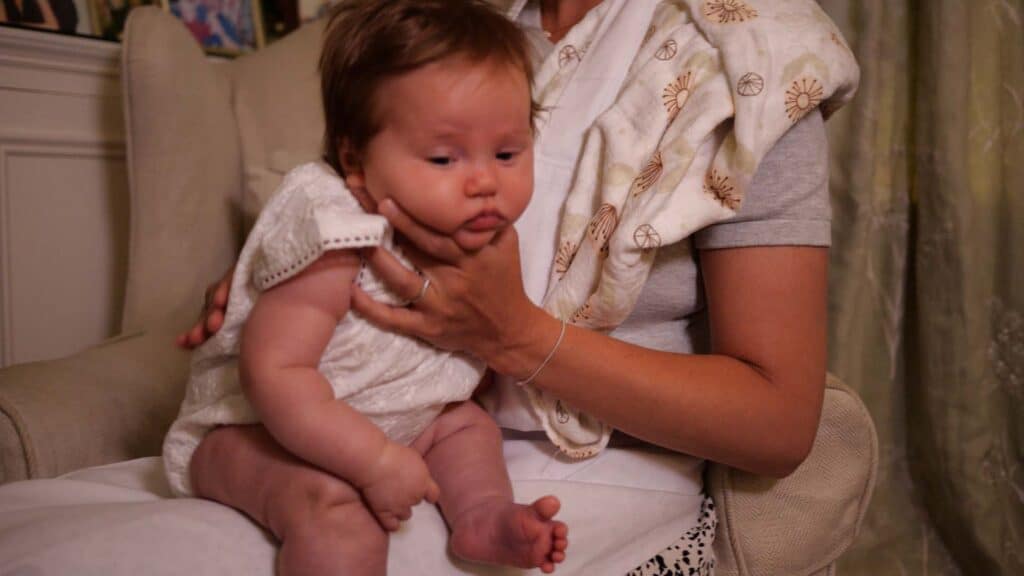During and after feeding you will need to wind your baby to prevent trapped wind when they are breast or bottle feeding.
Bottle fed babies tend to ingest more air, because artificial nipples aren’t as easy to seal a little mouth around, so they may need more winding.
The cues for trapped wind are crying, arched back, drawing legs into tummy, and clenched fists. Also, a purple/grey area between top lip and nose can be a sure indicator of wind.
Winding techniques

Sitting on your lap
Sit your baby on your lap facing sideways. Support your baby’s head and neck, make sure their tummy and back are straight. Place the palm of your hand flat against their chest and support their chin and jaw (don’t put any pressure on the throat area). Lean your baby forwards slightly and with your free hand, gently rub or pat your baby’s back.

Over your Shoulder
With your baby’s chin resting on your shoulder, support the head and shoulder area with one hand, and gently rub and pat your baby’s back. It might help to walk around as you are doing this.

What if my baby wont burp?
If there is no air there is no burp so don’t go pounding on your baby’s back for hours. But if you think there is trapped wind and none of the above works try lying them on their back and gently massaging their tummy. Also move your baby’s legs back and forth – like they’re riding a bicycle.
Once your baby is winded they may want more milk now they have more room in their tummy. But don’t force them to take more milk than they want. They will let you know when they have had enough.
Speak to your midwife or GP if your baby brings up milk after every feed or if they appear to be in pain or vomiting quite forcefully.

![How To Wind A Baby [Two Quick Tips]](https://www.nightnannies.com/wp-content/cache/flying-press/2819c20bee27f733ce69d95a5e00bc45.jpg)
Comments 4
test 6
Author
fab this is coming to my main mail box which is great thanks so much
Author
yes I got this too thanks so much
Author
i got this thanks